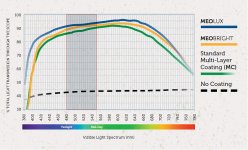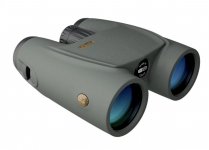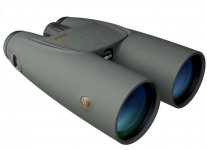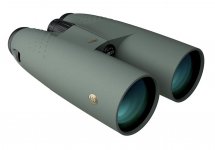-
Welcome to BirdForum, the internet's largest birding community with thousands of members from all over the world. The forums are dedicated to wild birds, birding, binoculars and equipment and all that goes with it.
Please register for an account to take part in the discussions in the forum, post your pictures in the gallery and more.
You are using an out of date browser. It may not display this or other websites correctly.
You should upgrade or use an alternative browser.
You should upgrade or use an alternative browser.
New MeoStar B1 Plus Binoculars (2 Viewers)
- Thread starter Troubador
- Start date
More options
Who Replied?NDhunter
Experienced observer

That's a good development. Using the light transmission graphs from the 2018 catalogue I speculated in another thread that the improvement in light transmission from changing to MeoLux should be about +2% at 550 nm, +3% at 650 nm and +4-5% at 450 nm for a complex binocular. Hopefully they'll make the same change to the S2 scope.
Henry:
I suppose we should all should know is what the term MeoLux means.
So, it would be good if you would help by telling us more on how you found those large differences in transmission numbers.
Jerry
I am not sure if Meopta has a primary market. They strive to make a very good bino that will leave the user with no regrets. I have the MorStar B1 10x50's and they are IMHO better than my other Euro bino's that cost more than double.
I know the new for 2020 Air bino's have confused a lot of folks but I believe they will find their nitch and again, not leave the customer with any regrets.
I know the new for 2020 Air bino's have confused a lot of folks but I believe they will find their nitch and again, not leave the customer with any regrets.
henry link
Well-known member
Henry:
I suppose we should all should know is what the term MeoLux means.
So, it would be good if you would help by telling us more on how you found those large differences in transmission numbers.
Jerry
My numbers, Jerry, but they come from sources in the 2019 Meopta catalogue. There's a graph showing the difference between rifle scopes using MeoLux vs MeoBright and in the technical data at the end of the catalogue there are Day (550 nm) and Night (480 nm) transmission specs for all Meopta Products. Maybe the 2020 catalogue will have revised transmission specs for the Meostar binoculars after the coating upgrade.
Henry
Last edited:
Very cool, I've always been a fan of the Meostar series. I actually prefer the old, knobby armor but if this is anything like the Cabela's Euro series armoring, it is very tactile and durable.
I was looking to buy a new pair of binoculars soon, I've not bought anything in months...
Justin
I was looking to buy a new pair of binoculars soon, I've not bought anything in months...
Justin
Thanks Lee, just have to get through another month, then perhaps some normalcy, fingers crossed.
Andy W.
Andy I truly hope I am wrong but one month seems optimistic.
Lee
I think it helps in these times to be optimistic, we will get over this as we have in the past. I wish the rainy weather would leave us for a while on the east coast.
Andy W.
Spring flowers are showing over here, Blackbirds are building nests, many species are singing and Hermann has seen Swallows already. This is optimistic: so you are right, let's all join nature.
Lee

And nature is taking over the deserted streets, foxes certainly...
SeldomPerched
Well-known member
Here is the diagram referred to by Henry.
Lee
Hi Lee and Henry,
Been interesting reading this thread as I know so little about Meopta except for the fact they have obviously a far far better product range than people like me would have realized. (Lee, I knew from you that they must meet exacting standards.)
So I became curious and wondered if you can explain the meaning of the shaded bar area in the graph Lee supplied. I am used to seeing Gijs's data but will admit freely to never looking beyond the figures themselves as a comparison between binos. I shan't feel patronized if you have to spell it out in words of one syllable! :-O
Tom
John A Roberts
Well-known member

Looking today I managed to find a couple more Plus images at: https://www.armietiro.it/12313
They show:
- a x32, and
- a 15x56 HD
And for comparison an image of the current B1.1 15x56 HD from Meopta's site
(the RA colour is probably unchanged, just a difference in the software settings used to make the images?)
John
They show:
- a x32, and
- a 15x56 HD
And for comparison an image of the current B1.1 15x56 HD from Meopta's site
(the RA colour is probably unchanged, just a difference in the software settings used to make the images?)
John
Attachments
Last edited:
Hi Lee and Henry,
Been interesting reading this thread as I know so little about Meopta except for the fact they have obviously a far far better product range than people like me would have realized. (Lee, I knew from you that they must meet exacting standards.)
So I became curious and wondered if you can explain the meaning of the shaded bar area in the graph Lee supplied. I am used to seeing Gijs's data but will admit freely to never looking beyond the figures themselves as a comparison between binos. I shan't feel patronized if you have to spell it out in words of one syllable! :-O
Tom
Tom the clues are the words in the bar at the bottom with Twilight on the left and Midday on the right. During daylight the eye is most sensitive to light at 555nm hence the right-hand margin of the grey band. The left-hand margin leaves me a little puzzled because max sensitivity here is normally given as 500nm (hence Gijs normally gives transmission data at 555 and 500) but the left margin is at 480. Anyway the grey band pretty much indicates the wavelengths to which the human is eye is most sensitive at twilight and during daylight.
Lee
Users who are viewing this thread
Total: 3 (members: 0, guests: 3)







